
News + Trends
Digitec at Herofest: "Age of Empires 2" finale, tinkering, gaming and virtual realities
by Domagoj Belancic

Counter-Strike has always been one of the most popular competitive games in the world. The game has an active e-sports community in Switzerland too. In an interview with Counter-Strike expert Remo Blaser, I take a look back at the beginnings and development of the scene.
The twelfth edition of Digitec Playground is all about Counter-Strike 2. Our Cup qualifier is on right now. The big LAN final will take place in Zurich on 20 April. Our tournament will be hosted and analysed by Remo Blaser, among others. The Counter Strike expert and caster has been an integral part of the Swiss e-sports scene for years.
I spoke to Remo about the history, current state and future of the Swiss Counter-Strike scene.
Remo, you’re one of the most popular Counter-Strike casters in Switzerland on top of co-hosting the Digitec Playground. Tell me about your career in the Swiss e-sports scene.
I really got into it about 15 years ago with Call of Duty 4: Modern Warfare. Together with my four friends, we took over e-sports team mYinsanity and got off to a flying start. A few years later, with the launch of Counter-Strike: Global Offensive (editor’s note: CS:GO for short), I gained a foothold in the world of Counter-Strike. One of the reasons for this was that the Call of Duty scene in Switzerland was shrinking and becoming inactive. When I switched to CS:GO, I also moved to a new team – Silentgaming.
I was active there for three to four years. Eventually, I got the feeling I was no longer improving, that I’d reached my zenith. I was also no longer able to spend the time needed to keep up – partly because of my studies. These days, I still play Counter-Strike several times a week, just not at that extremely high, competitive level.
Did you start casting immediately after your career as an active player?
My transition from player to caster was seamless. The first tournament I cast was Prefire The League in 2017. Some friends organised it and asked me to join because I know my way around CS:GO and I’m good at talking. As a little boy, I used to imitate Beni Thurnheer, the famous Swiss commentator – so I thought, why not? I also thought it was great I could still be active in the scene – not with a mouse and keyboard, but armed with a microphone.
Things got really serious with the start of Hero League 2019. It was the first time I was regularly booked for a tournament. For two months, twice a year, I was allowed to stand in front of the camera every Wednesday. The organisation and production were on a completely different level than anything we’d seen before.
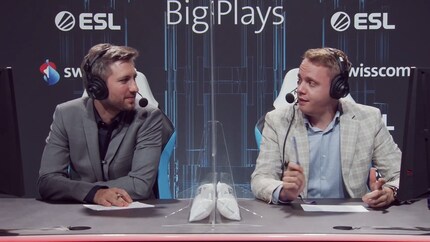
Let’s turn back time a little. Did you have any points of contact with the Swiss Counter-Strike scene before your CS:GO career – in the days of Counter-Strike Source and Counter-Strike 1.6, say?
I wasn’t really active in the competitive Counter-Strike scene as a player back then. But as mYinsanity, we also had a Counter-Strike Source team. And it was always clear to me that Counter-Strike was the king of the competitive scene. We Call of Duty players were outnumbered at LAN parties, everyone played Counter-Strike.
But I followed the [ESL-EPS Championships](https://de.wikipedia.org/wiki/ESL_Meisterschaft/Ergebnisliste#Alpen_(%C3%96Austria,_Switzerland_and_Liechtenstein) in German-speaking countries – players from Switzerland, Austria and Germany took part. Both Source and 1.6 were played, it was one of the first tournaments I watched live online.
How would you describe the Swiss e-sports and Counter-Strike scene in the noughties?
It all felt very familiar. A big difference to today was that there was one platform that connected all Counter-Strike players: gamersnet.ch. It’s still up, by the way – you can view the entire archive of tournaments and leagues from that time. The game used to be less popular than it is today. Fewer people played it, you had to actively look for other players. There also wasn’t a matchmaking system as we know it today. As a result, gamersnet.ch was all the more important.
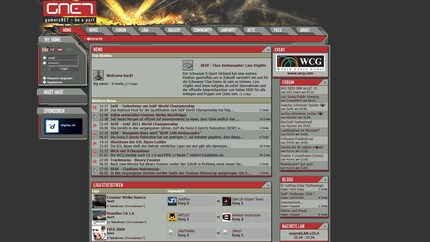
LAN parties were an essential part of the scene, a place you could exchange ideas with like-minded people. Nowadays, almost everything happens via social media channels that didn’t exist in this form back then. What’s more, today I can simply start Counter-Strike 2 and use matchmaking to find fellow players and opponents – without any personal interaction.
The situation between the two camps at the time was tricky. I guess that around 60 per cent played Counter-Strike 1.6, 40 per cent preferred Counter-Strike: Source. The two scenes couldn’t do anything together. Fortunately, the third Counter-Strike release, Condition Zero, was never popular in Switzerland.
The two Counter-Strike scenes couldn’t do anything together.
Gaming and e-sports are accepted in society today. Even big Swiss brands dare to organise or sponsor Counter-Strike tournaments. How was it back then?
At the time, Counter-Strike was struggling as a result of the «killer games» debate. It was the most «realistic» and «brutal» competitive game. And clearly the most popular. As a result, Counter-Strike was quickly brought up in the debate surrounding apparently dangerous games.
But the scene wasn’t as visible as it is today. Some «nerds» would get together for a weekend at a LAN party and play «killer games» non-stop. This seemed strange to outsiders – «lonely, depressed people», that was the stereotype. Accordingly, there was hardly any mainstream media coverage of such events – and when there was, it was sceptical or even negative.
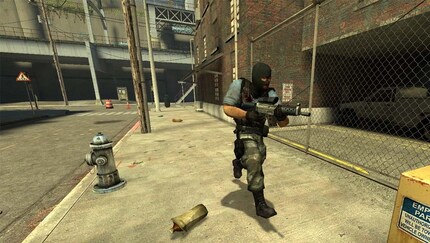
How would you rate the size of the current Swiss scene compared to the noughties?
The hardcore centre of the scene has definitely shrunk. It’s like I said – you had to be an active part of the scene to play against others at all. Today you no longer have to, thanks to matchmaking.
I also think the hardcore scene has become even smaller with the release of Counter-Strike 2. Many players are using this upheaval as an opportunity to take a break or quit altogether. However, it’s also nice to see many Source and 1.6 veterans still actively involved in the scene in some way. They cast, establish teams or are involved in organising tournaments – pretty cool.
But it has to be said clearly – although the core has become smaller, the surrounding scene has grown exponentially. Countless casual gamers play from time to time. That’s why I think tournaments like the Digitec Playground are extremely important. The grass-roots tournaments at the Playground are for everyone, not just for a small hardcore audience, giving the scene more visibility.
How did you experience the switch from Counter-Strike Source and Counter-Strike 1.6 to Counter-Strike: Global Offensive in 2012?
Both in Switzerland and internationally, few players dared to make the switch immediately. Its launch was disastrous, riddled with bugs and oversimplified gameplay. The game rattled along irrelevant for about a year. Many bugs were only fixed with the Arms Deal update. The update also introduced skins to the game – an important milestone and a great motivator to play again and again.
With this update, CS:GO exploded – in Switzerland too. The game also managed to unite the hostile Source and 1.6 camps. After that, the Swiss scene really took off. Many new teams were founded, tournaments launched.
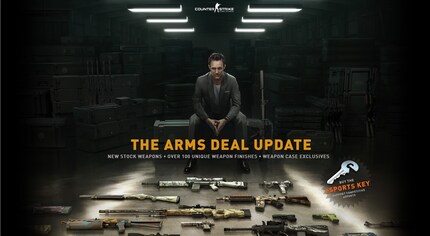
What important milestones in terms of tournaments and events have there been in the Swiss scene since the launch of CS:GO?
Certainly, the start of the Swiss E-Sports League. Similar to gamersnet.ch at the time, the Swiss E-Sports League functioned as a central platform where tournaments could be held. The first SwitzerLAN tournaments were also groundbreaking. They managed to attract not just 100 or 200 guests, but 500 or 600 gamers to the event.
The Supreme Masters was also important – CS:GO LAN parties with a twist. Participants had to pay slightly more to take part. This fee was thrown into a pot to be distributed to the winners. This also attracted pro teams from all over Europe, with players from the international elite.
I also have to mention Hero League, it’s significantly professionalised the Swiss scene. Certainly also because the right budget was available. The fact that a company as large as Swisscom got involved in Counter-Strike helped the scene a lot.
How are smaller, non-regular tournaments like the Digitec Playground received in the scene?
Tournaments like these are important for the scene to grow. We often get tournaments where only the top eight teams in Switzerland take part and everyone else is left out. Formats such as the Playground benefit both hardcore pro players and casual gamers, who can take part in the casual tournament without restrictions. In the scene, Digitec is seen as a prime example of how the casual and pro scenes can be combined. Especially now, at a time when some long-term institutions such as Hero League are disappearing, smaller formats like this are all the more important for the scene.
Smaller tournaments like the Digitec Playground are important for the scene to grow.
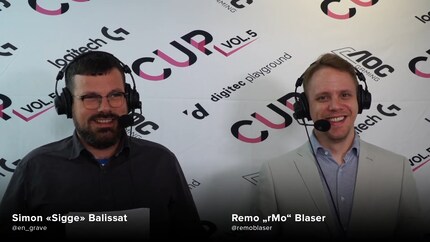
How does Counter-Strike fare in terms of popularity compared to other e-sports titles in Switzerland?
Currently, the core Counter-Strike scene is certainly the largest of all e-sports communities in Switzerland. League of Legends might be a little more popular overall, with many more casual gamers playing from time to time.
Super Smash Bros is also a perennial favourite in Switzerland. Overwatch and Rainbow Six Siege also enjoyed a short time in the sun. I can’t assess the mobile gaming scene, it’s on other platforms and is almost invisible to me. But I think Brawl Stars, for example, also has a huge community in Switzerland.
What about Counter-Strike competitor Valorant?
Valorant met huge hype in Switzerland when it was launched. Many Counter-Strike players have tried it out, including me. But the hype quickly faded due to the complicated licensing rights and fees charged by developer studio Riot. Riot sets all the rules for tournaments and cups, so there’s very little room to manoeuvre. People wanted to play in Valorant tournaments, but this often wasn’t possible due to the strict regulations. I was also asked by a brand to cast a tournament, but it had to be cancelled two days before starting due to problems with Riot.
Internationally, Valorant is still a big rival for Counter-Strike. And that’s a good thing. I also think Counter-Strike 2 wouldn’t have been released so quickly without Valorant.

How do you rate the launch of Counter-Strike 2 – what impact will it have on the Swiss scene?
All in all, the release of Counter-Strike 2 is a good thing. Although some players are still frustrated by the lack of updates and some bugs, the game was released in a much better state than CS:GO. Some players don’t think innovations like the new smoke system are cool. But I think it’s good that Valve is daring to innovate. In the e-sports scene, you’ll always encounter resistance when you change the status quo.
I’m also glad that Counter-Strike 2 has completely replaced the old CS:GO. Otherwise we’d have had a fractured scene again, as with Source and 1.6. In the long term, the Swiss scene will grow with Counter-Strike 2, I’m sure of it.

How high is the standard of play in Switzerland, and how well do we compare internationally?
mYinsanity, Lausanne E-Sports and Team Solid, formerly known as Sans Vergogne, are among the top three teams in Switzerland. On paper, mYinsanity is the strongest – especially with the players they signed from Germany.
But the Swiss scene as a whole is at a very low tier internationally, to be honest. To use a football analogy, Swiss teams don’t play in the Champions League, but rather in the National League. This was seen, for example, when Swiss teams qualified for international ESL tournaments via Hero League. But it’s really hard anyway. In other countries, you can become a full-time player much faster on an e-sports salary – in Switzerland, it’s almost impossible.
Nevertheless, we always get individual players who can celebrate international success. Maniac, for example, is one of the greats. Or SolEk, back in the day. Currently, there’s also rigoN.
Internationally, Swiss teams play in a type of National League, not an equivalent to the Champions League.
And how do you rate the quality of casters in Switzerland?
In general, the quality has risen sharply. This is mainly down to the fact that as the number of tournaments and events increased, many casters were able to stand in front of the camera on a regular basis and gain regular experience – sometimes in front of a live audience, such as at Herofest. Production has also become much more professional. As a caster, I can prepare myself much better, focus on the game and rely on a production crew in the background.
What would you wish for the Swiss Counter-Strike scene?
We need a consistent league again to set a certain rhythm. On the one hand, for players, who’d be able to take part in tournaments on a regular basis, but also for the audience. Regular events also allow spectators to share in the excitement and become fans of teams. This is difficult without a consistent league.
The same problem exists with other titles, but for different reasons. League of Legends, for example, has the same problem as Valorant. Riot controls everything, setting strict rules and high fees for tournaments. Valve doesn’t do that with Counter-Strike, you can just set up a tournament. As a result, I’d like to see a community-driven league built up over the next few years, staying alive as long as possible thanks to a grass-roots approach.
On Saturday, 23 March, the first qualifiers for Playground Cup Vol. 12 will start. Counter-Strike 2 will be played – this was clearly decided by the Community in a public vote.
The streams will be hosted by Counter-Strike and shooter experts Remo Blaser and aRTycH. Our hype beast Simon Balissat will also be taking part. The two qualifiers for the Pro tournament and the two finals for the Pro and casual tournaments will be broadcast live on Twitch and YouTube.
All information about the tournament and registration can be found in this article:
My love of video games was unleashed at the tender age of five by the original Gameboy. Over the years, it's grown in leaps and bounds.
Interesting facts about products, behind-the-scenes looks at manufacturers and deep-dives on interesting people.
Show all
Background information
by Philipp Rüegg

Background information
by Domagoj Belancic

Background information
by Domagoj Belancic